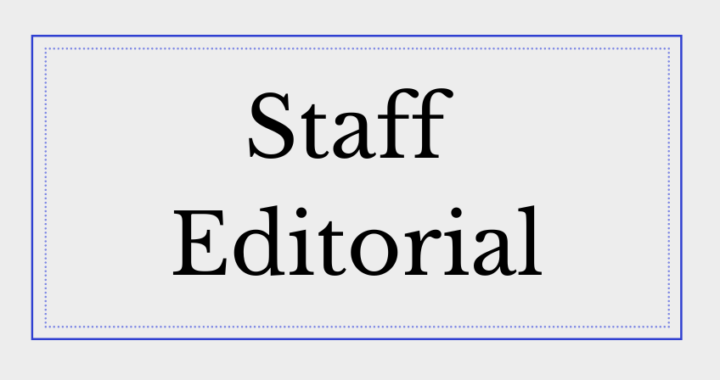Student breaks boundaries
5 min readBy Anum Shaikh
For the past nine years, especially since college started, I have been figuratively treading the third space between Pakistan and America.
As a Muslim woman, I’ve been dealing with the decision of whether or not to wear a veil and struggling to uphold my cultural values as a Pakistani national in the United States.
In an article from 2004 Journal of Intercultural Studies, author Torika Bolatagici defines this ‘third space’ as a form of cultural hybridity via which new ideas enter, possibly weakening or challenge the dominant culture or idea.
My experiences parallel that concept of “cultural hybridity” as my Pakistani culture merges with the American culture.
While I’m familiar with the notion of staying chaste and modest, this concept seems archaic and foreign in today’s Westernized world.
One of the most common ways to acquire chastity is by wearing a veil, or hijab.
Due to my father’s and Pakistan’s moderate view of Islam, I didn’t grow up wearing a hijab.
In Pakistan, I was constantly reminded of my faith surrounded by people who shared my values and made me consciously aware of sexual and faith related boundaries.
My faith was strengthened, as it was easier to turn myself away from the world’s temptations.
Upon moving to the United States, it is more difficult to be constantly conscious of these boundaries.
Often. I’m the only Muslim in my classes, surrounded by dominantly white Christians.
I was offered Honors Admission to UMW, but my admittance was questioned before enrolling because my immigration status was ‘pending.’
All the papers were filed in 2001, but between the Immigration Nationalization Service rejecting the case due to lack of cooperation from my family’s sponsor, losing documentation and filing the case again, my family’s immigration case returned to the starting point.
I had no idea how I was going to be admitted without my green card or U.S. citizenship.
After contacting a local congresswoman, countless phone calls and numerous visits to the Admissions Department and Financial Aid, I was finally accepted.
At UMW, one way the ‘third space’ has been significant concerns my conflict of whether or not to wear a veil.
The Holy Qur’an promotes covering a woman’s body to distinguish the spheres of interaction between men and women. Wearing the veil directs attention away from me and easily indicates my lack of interest in dating.
It indirectly reveals that I am a Muslim and hold conservative values, distinguishing me from others in settings where my faith is challenged.
Last year, after being convinced by a friend, I decided to give the veil a chance.
My cover-story was that I would wear it for Ramadan, a month of fasting and more prayer.
Since I didn’t know whether I would wear the veil after Ramadan, I didn’t want to bind myself to an invisible contract saying I had adapted a new lifestyle.
After 20 minutes of fitting the veil, it finally looked ready, though, I didn’t feel ready. I was about to take a huge step where the world outside may perceive me differently.
Walking to a fast-breaker hosted by the UMW Islamic Student Association, I could see people’s eyes open wider than usual. Some had the courage to gape their mouths wide open. Many asked the reason behind this new transformation, so I told them: it was time for a change!
During the entire month, I sensed similar tension from others. Many American friends did not recognize me. A few were courageous enough to ask about my transformation.
I wondered if others felt a violation of a code if they asked. My female friends asked me more about my religious practices and the significance of the veil. My male friends appeared more cautious of what they said around me; their body language seemed to put up a front against me.
I avoided Campus Walk crowds so I wouldn’t have to face surprised stares from friends who hadn’t seen me since the veil. It was better to not see friends who knew me well but didn’t greet me because my long black hair wasn’t flowing with the wind.
To free myself of this mental torture, the less-taken College Avenue route served my needs well. Whether imagination or reality, students always seemed to be staring at the back of my head. Despite the discomfort, I felt more empowered than usual because my veil instigated some curiosity and mysteriousness.
At my job in the Emergency Room, I received similar curiosity and a sense of reservation. My coworkers asked me more about my background than ever before, giving me a chance to be myself. Ironically, through the veil, I had unmasked my true identity to people. People began to judge me based on my intelligence and speech, instead of my clothing. When the month came closer to an end, the difficult choice arose to continue or end wearing the veil.
Whether it was for the sake of normality or the depth of questions that came with the veil, my decision was to take it off. I cease to understand my thought process behind that decision and have questioned it many times since then.No rationality can be traced behind my decision, but just a sense of deviation from the Western concept of normality that I felt with the veil over my head.
It’s not the presence or lack of a veil that brings discomfort. It is about the choices I have to make in my everyday life pertaining to the cultural and social differences.
To remain honest to myself, I hold my head high and take life’s challenges head-on, with or without the ‘third space.’ I continue to live with this daily jihad, an Arabic term for an internal, spiritual struggle for one’s disciplines.
My jihad involves staying true not only to my religion, but also to myself. Through my experiences, I learn more about myself and the society’s influences on me and feel a stronger person today than I did two years ago.











